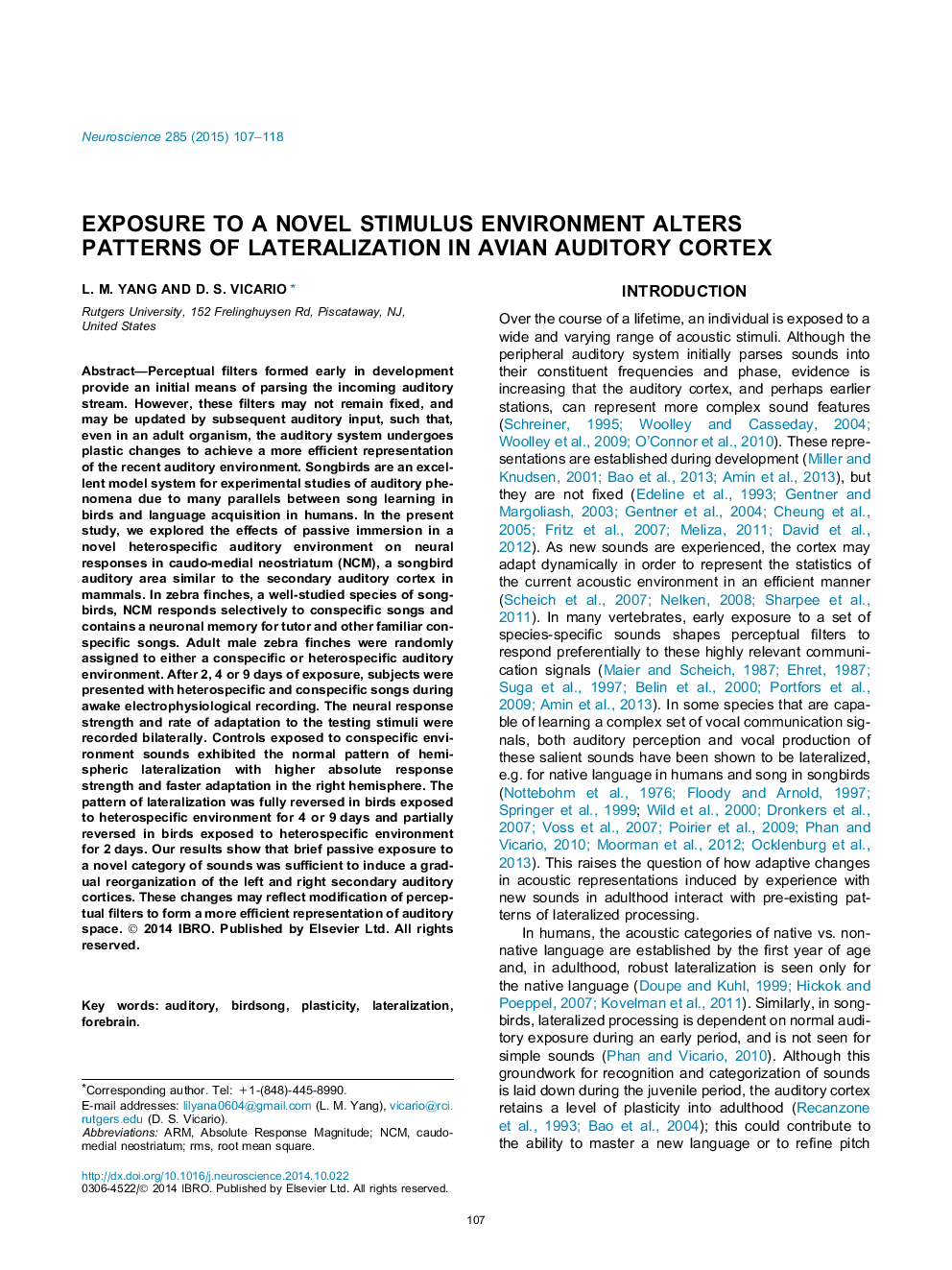| کد مقاله | کد نشریه | سال انتشار | مقاله انگلیسی | نسخه تمام متن |
|---|---|---|---|---|
| 6273154 | 1614791 | 2015 | 12 صفحه PDF | دانلود رایگان |
- Songbirds communicate using complex vocalizations learned by imitation, as humans do.
- Songs but not simple sounds elicit different responses in the two brain hemispheres.
- This lateralization is reversed by hearing a novel acoustic environment for 2-4Â days.
- Auditory responses change in both hemispheres to represent new sound statistics.
- The brain adapts dynamically to novel patterns, e.g. when exposed to a new language.
Perceptual filters formed early in development provide an initial means of parsing the incoming auditory stream. However, these filters may not remain fixed, and may be updated by subsequent auditory input, such that, even in an adult organism, the auditory system undergoes plastic changes to achieve a more efficient representation of the recent auditory environment. Songbirds are an excellent model system for experimental studies of auditory phenomena due to many parallels between song learning in birds and language acquisition in humans. In the present study, we explored the effects of passive immersion in a novel heterospecific auditory environment on neural responses in caudo-medial neostriatum (NCM), a songbird auditory area similar to the secondary auditory cortex in mammals. In zebra finches, a well-studied species of songbirds, NCM responds selectively to conspecific songs and contains a neuronal memory for tutor and other familiar conspecific songs. Adult male zebra finches were randomly assigned to either a conspecific or heterospecific auditory environment. After 2, 4 or 9Â days of exposure, subjects were presented with heterospecific and conspecific songs during awake electrophysiological recording. The neural response strength and rate of adaptation to the testing stimuli were recorded bilaterally. Controls exposed to conspecific environment sounds exhibited the normal pattern of hemispheric lateralization with higher absolute response strength and faster adaptation in the right hemisphere. The pattern of lateralization was fully reversed in birds exposed to heterospecific environment for 4 or 9Â days and partially reversed in birds exposed to heterospecific environment for 2Â days. Our results show that brief passive exposure to a novel category of sounds was sufficient to induce a gradual reorganization of the left and right secondary auditory cortices. These changes may reflect modification of perceptual filters to form a more efficient representation of auditory space.
Journal: Neuroscience - Volume 285, 29 January 2015, Pages 107-118
